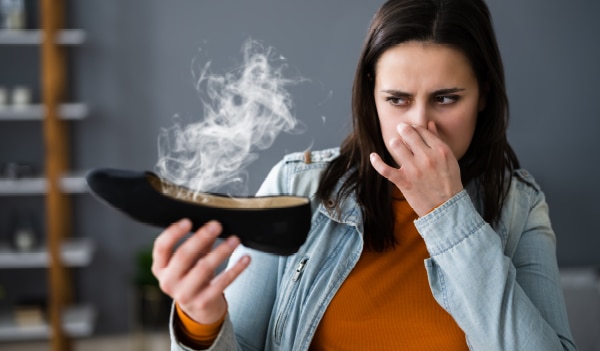How to Stop Sweaty Hands and Feet: Top Dermatology Treatments for Excessive Sweating
How to Stop Sweaty Hands and Feet: Top Dermatology Treatments for Excessive Sweating
Blog Article
Introducing the Intricacies of Excessive Sweating: A Comprehensive Guide to Diagnosis and Administration
Extreme sweating, clinically known as hyperhidrosis, is a problem that affects a significant number of individuals and can have an extensive effect on their top quality of life. While sweating is an all-natural physical function, its overactivity in hyperhidrosis presents a distinct set of challenges that frequently go beyond simple discomfort.

Understanding Hyperhidrosis Causes
Hyperhidrosis triggers can be connected to different variables such as genetics, hormonal discrepancies, and particular medical problems. Genes play a significant function in key focal hyperhidrosis, where individuals inherit the problem from their household members. By identifying the certain variables adding to extreme sweating, health care carriers can tailor therapy strategies to address the underlying cause, using alleviation and improving the high quality of life for individuals impacted by hyperhidrosis.
Identifying Hyperhidrosis Symptoms
:max_bytes(150000):strip_icc()/the-doctor-cosmetologist-makes-injections-of-botulinum-toxin-on-the-palms-of-a-woman-against-hyperhidrosis--women-s-cosmetology--skin-care--1254089846-9a8ff2f7f5dc47f18339b3c9d138c5fd.jpg)
Additionally, hyperhidrosis signs may manifest in social and emotional distress, as people may really feel humiliated or nervous regarding their sweating, leading to avoidance of social scenarios (How to stop sweaty hands). Additionally, duplicated episodes of excessive sweating can cause skin maceration, fungal infections, and a general decline in self-confidence
Diagnostic Refine for Hyperhidrosis
Starting the analysis process for excessive sweating involves detailed analysis of the person's case history and health examination. Asking about the start, duration, and causes of sweating episodes is vital to distinguish in between main focal hyperhidrosis and second generalized hyperhidrosis. Clinical history needs to likewise consist of questions concerning medications, clinical conditions, and household background of hyperhidrosis.
During the physical exam, particular focus is paid to the areas impacted by sweating. The medical care supplier may examine the level of sweating, check for indications of underlying problems, and assess the effect of sweating on the individual's high quality of life. In addition, certain tests like the gravimetric examination, starch-iodine examination, or skin conductance measurements may be performed to quantify the amount of sweat created.
In addition, in instances where second hyperhidrosis is suspected, additional tests such as blood tests, urine tests, and imaging studies may be recommended to identify the underlying reason for excessive sweating. The diagnostic process aims to properly determine the kind and reason for hyperhidrosis to lead ideal monitoring methods.
Treatment Alternatives for Hyperhidrosis
When resolving excessive sweating, numerous therapy alternatives are readily available to relieve signs and symptoms and improve the individual's top quality of life. The therapy technique for hyperhidrosis depends upon the seriousness of signs and symptoms and the client's action to initial therapies.
Topical therapies, such as aluminum-based antiperspirants, are usually advised as the very first line of defense for managing light situations of hyperhidrosis. These products work by connecting the sweat ducts, thus reducing the quantity of sweat that gets to the skin's surface area. For individuals with much more extreme signs and symptoms, dental medications like anticholinergics might be suggested to assist decrease sweating. However, these medications can have side results and are not suitable for everyone.
Effective Management Techniques
To properly take care of hyperhidrosis, a comprehensive and individualized treatment plan customized to the individual's details demands and feedback to previous treatments is crucial. This strategy might include a mix of restorative methods, including lifestyle modifications, topical treatments, dental drugs, botulinum contaminant shots, iontophoresis, and in serious cases, surgical treatments like gland removal or sympathectomy. Lifestyle adjustments such as putting on moisture-wicking garments, utilizing antiperspirants, and practicing stress-reducing techniques can enhance clinical interventions. Topical antiperspirants containing light weight aluminum chloride are usually the first-line therapy, with stronger formulations readily available for resistant cases. Dental medicines like anticholinergics may be suggested for generalised hyperhidrosis. Botulinum toxin shots are efficient for focal hyperhidrosis, offering temporary alleviation by blocking the launch of acetylcholine. Iontophoresis, including making use of a reduced electrical current to reduce sweat gland task, can be valuable for both palmoplantar and axillary hyperhidrosis. Surgical choices are generally booked for serious, refractory cases and call for cautious consideration of threats and benefits. A multidisciplinary technique involving skin doctors, health care doctors, and, if essential, specialists, can optimize the administration of hyperhidrosis.
Conclusion
In verdict, hyperhidrosis is Find Out More a problem defined by extreme sweating, which can significantly affect an individual's quality of life. With correct medical diagnosis and monitoring approaches, people suffering from hyperhidrosis can find relief and improve their overall health.
Too much sweating, medically known as hyperhidrosis, is a condition that influences a substantial number of individuals and can have a profound impact on their top quality of life. By recognizing the particular elements adding to too much sweating, health care companies can tailor therapy plans to address the underlying reason, using relief and boosting the high quality of life for individuals influenced by hyperhidrosis.
Hyperhidrosis, defined by too much sweating past what is necessary for managing body temperature, can significantly influence an individual's top quality of life. Asking about you can try here the beginning, Bonuses duration, and causes of sweating episodes is vital to distinguish in between main focal hyperhidrosis and second generalized hyperhidrosis. Exessive Sweating.In final thought, hyperhidrosis is a condition defined by too much sweating, which can significantly influence an individual's top quality of life
Report this page